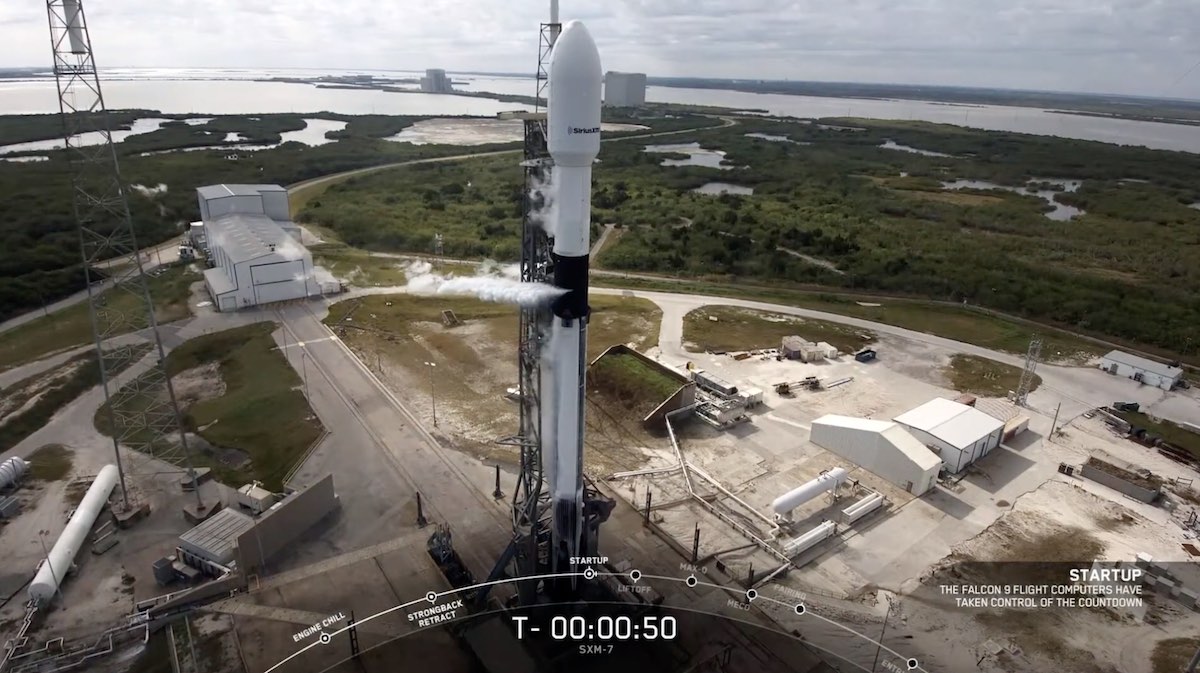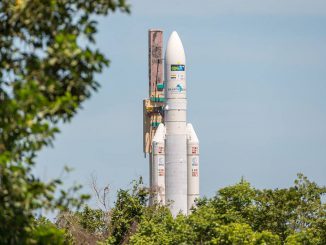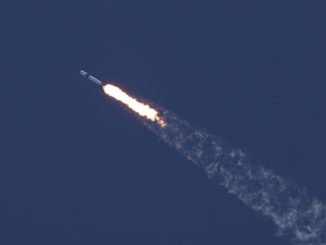
SpaceX called off the planned launch of a Falcon 9 rocket Friday at Cape Canaveral, halting the countdown less than a minute before liftoff to allow time to perform additional ground system checkouts before the mission’s next launch opportunity no earlier than Sunday.
SpaceX was set to launch the Falcon 9 rocket with the SiriusXM SXM 7 radio broadcasting satellite at 12:55 p.m. EST (1755 GMT) Friday, less than 17 hours after a Delta 4-Heavy rocket from rival launch company United Launch Alliance took off from a nearby pad at Cape Canaveral.
The Delta 4-Heavy successfully delivered a U.S. government spy satellite into orbit Thursday night, and a launch of SpaceX’s Falcon 9 rocket Friday would have been the shortest span between space launches at Cape Canaveral since 1967. That distinction will have to wait for another time.
The SXM 7 satellite was supposed to blast off at 11:21 a.m. EST (1621 GMT) at the opening of a nearly two-hour launch window, but SpaceX pushed back the launch time as officials monitored upper level wind conditions over Cape Canaveral.
SpaceX engineers gave approval to start filling the Falcon 9 rocket with propellant at 12:20 p.m. EST (1720 GMT), and the countdown progressed normally until the Falcon 9 launch director called a hold at T-minus 30 seconds.
In a tweet, SpaceX said the company was “standing down from today’s launch attempt to perform additional ground system checkouts.”
SpaceX said it is “working toward no earlier than Sunday” for the SXM 7 mission’s next launch attempt. If SpaceX moves forward with a launch attempt Sunday, the nearly two-hour window is expected to open around 11:22 a.m. EST (1622 GMT).
The mission will mark SpaceX’s 25th Falcon 9 launch of the year, and the 102nd flight of a Falcon 9 rocket overall since the workhorse’s first mission in 2010. The reusable booster launching with SXM 7 — numbered B1051 — is making its seventh trip to space.
SpaceX says one half of the rocket’s clamshell-like payload fairing protecting the SXM 7 spacecraft is also being reused for this mission after recovery following the launch of South Korea’s Anasis 2 military communications satellite earlier this year.
The first stage booster and payload fairing halves will be recovered again downrange in the Atlantic Ocean after the Falcon 9 takes off with the SXM 7 satellite.
The Falcon 9’s second stage will fire two times to place the SXM 7 spacecraft into a parking, then deploy the radio broadcasting payload into an elliptical, or egg-shaped “sub-synchronous” transfer orbit at T+plus 31 minutes, 39 seconds.
The roughly 15,000-pound, or nearly 7-metric ton, spacecraft is loaded with maneuvering propellant to boost itself toward a final perch in geostationary orbit more than 22,000 miles (nearly 36,000 kilometers). In that orbit, the spacecraft will orbit Earth at the same rate the planet rotates, giving SXM 7 a fixed view of the Americas 24 hours a day, seven days per week.
“SiriusXM, the leading audio entertainment company in the United States, will use SXM 7 to ensure continuous and reliable delivery of SiriusXM’s entertainment and data services to tens of millions of subscribers across North America,” Maxar said in a statement. “SXM 7 will deliver the highest power density of any commercial satellite on-orbit, sending more than 8,000 watts of content to the continental U.S., Canada, Puerto Rico and the Caribbean, increasing the quality of signal for SiriusXM subscribers.”
Once in orbit, the SXM 7 satellite — based on Maxar’s 1300-series spacecraft design — will unfurl a large S-band antenna reflector to broadcast radio signals to receivers on moving vehicles.
Email the author.
Follow Stephen Clark on Twitter: @StephenClark1.



